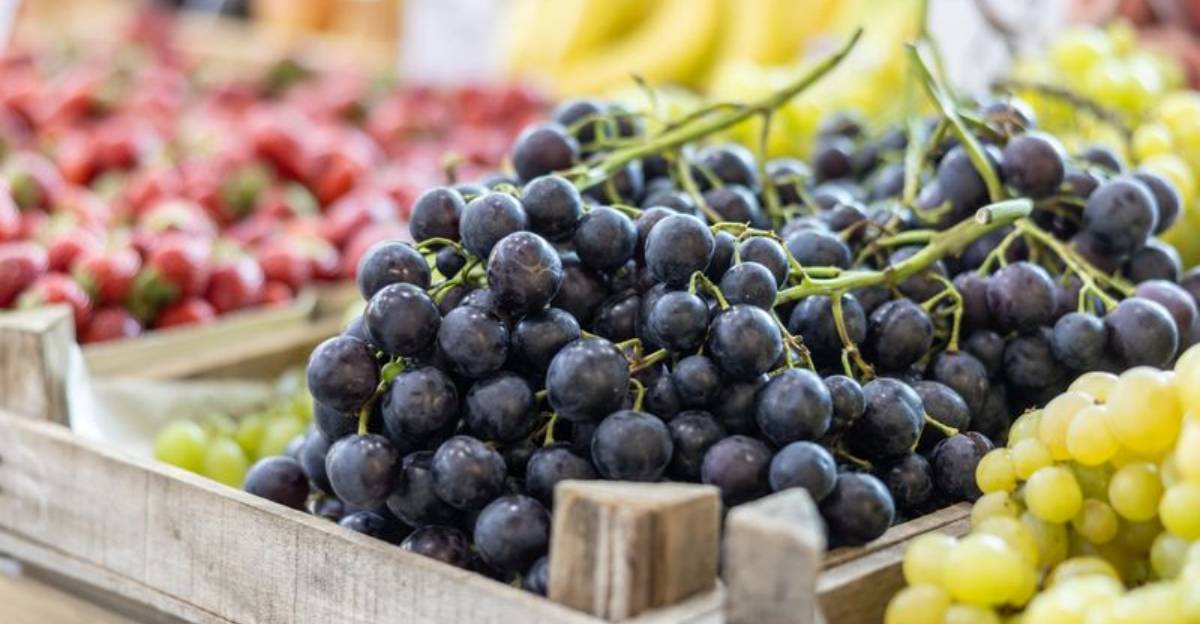8 Things You Should Know Before Sampling Grapes At The Grocery Store

We’ve all been there—standing in front of the produce section, eyeing those plump, juicy grapes at the grocery store, wondering if they’re as sweet as they look. I’ll admit, I’ve been guilty of sneaking a sample or two myself!
But before you pop that grape into your mouth, it’s important to know that there are some unspoken rules and practical considerations surrounding fruit sampling.
Grapes, in particular, come with their own etiquette, and you’d be surprised at the little things to keep in mind. Whether it’s about hygiene, proper selection, or store policies, there’s more to sampling than you might think!
1. Always Wash Your Hands First
Just last week, I watched a shopper touch every apple in the bin, then grab a handful of grapes! Yikes! Unwashed hands spread germs faster than gossip at a family reunion.
The average person touches their face 23 times an hour, which means those fingers have collected all sorts of invisible hitchhikers. Before sampling anything, find the nearest restroom or use hand sanitizer.
Your fellow shoppers will silently thank you, and you’ll avoid turning the produce section into a petri dish of seasonal bugs. Remember, those grapes aren’t the only things being examined—other shoppers notice your hygiene habits too!
2. One Grape Is Enough
Confession time: I once ate seven grapes while pretending to inspect a bunch. The cashier’s knowing look still haunts me! Sampling isn’t an all-you-can-eat buffet, folks.
Taking just one grape gives you all the information you need about sweetness and texture. Multiple samples cross the line from quality control into snack territory. Plus, those grapes are sold by weight—each one you eat is technically unpaid merchandise.
Store managers understand the occasional taste test but frown upon grazing. The unwritten rule? One grape per variety, maximum. Your wallet (and conscience) will thank you at checkout time.
3. Check Store Policy First
Surprise! Not all grocery stores welcome grape sampling. My embarrassing moment came at Fancy Foods Market when the manager politely informed me their “no sampling” policy was posted at every entrance.
Some upscale markets strictly prohibit unpaid sampling, while farmer’s market vendors often encourage it. Chain supermarkets typically fall somewhere in between, with unwritten rules rather than formal policies.
The smartest approach? Observe what other shoppers do or simply ask an employee. A quick “Is it okay if I try one grape?” shows respect for store rules and prevents awkward confrontations. When in doubt, wait until after purchase—it’s only a few minutes longer!
4. Don’t Discard Stems or Seeds
Grape stems abandoned among the bananas—grocery crime scene number one! Last month, I spotted a trail of discarded grape parts leading through three aisles like breadcrumbs in a fairy tale.
When sampling, hold onto any stems, seeds, or skins until you find a proper disposal spot. Leaving these bits behind creates extra work for employees and potential slip hazards. Many produce sections have small waste bins specifically for this purpose.
No bin in sight? Your pocket or purse can temporarily house that tiny stem until you reach a trash can. Small courtesies like this maintain a pleasant shopping environment for everyone and show respect for the hardworking store staff.
5. Sample From Bunches You’ll Actually Buy
Picture this: a shopper tastes grapes from six different bunches, then walks away empty-handed! I witnessed this grape-tasting marathon last summer and couldn’t believe my eyes.
The golden rule of sampling is simple—only taste from bunches you genuinely intend to purchase. If that first grape isn’t sweet enough, move on to another variety rather than continuing to sample from the same bunch.
This approach is both more hygienic and more considerate to fellow shoppers. Nobody wants to buy a bunch with mysterious gaps where grapes once grew! Your sampling strategy should be targeted and purposeful, not a random grape lottery.
6. Be Mindful of Organic vs. Conventional
Whoops! I once grabbed a sample from the organic section while comparing prices with conventional grapes. The price difference suddenly made sense when I tasted that explosion of flavor!
Organic and conventional grapes aren’t just different in price—they often vary in taste, texture, and growing methods. Sampling across these categories can help you decide if the organic premium is worth it for your palate.
However, be careful not to mix up the displays when returning bunches to their proper places. Accidentally moving grapes between sections creates pricing confusion at checkout and disrupts the store’s careful organization. Those little organic stickers matter more than you might think!
7. Consider Seasonal Variations
My grape-sampling disappointment happens every winter when I forget that grapes have seasons too! Those perfect summer grapes set unrealistic expectations for their winter cousins.
Grape flavors change dramatically throughout the year, with peak sweetness usually occurring in late summer and early fall. Different varieties dominate the shelves as seasons shift—green grapes in spring, reds in summer, and specialty types appearing briefly during their prime.
Adjusting your expectations based on the calendar improves your sampling satisfaction. That slightly tart grape in January might actually be the best available until June! Seasonal awareness transforms you from disappointed sampler to informed grape connoisseur, appreciating each variety in its proper time.
8. Bring Your Own Sanitizing Wipes
My shopping bag always contains grape-sampling emergency supplies: tiny sanitizing wipes! This habit started after watching someone sneeze directly onto the grape display (I still have nightmares).
Even in the cleanest stores, produce sits exposed to airborne particles and countless hands. A quick wipe of your selected grape provides peace of mind without inconveniencing anyone. Some produce sections offer produce wash stations, but they’re increasingly rare.
This small precaution protects both you and subsequent shoppers. Plus, it demonstrates your commitment to responsible sampling. Store employees notice and appreciate these thoughtful gestures, sometimes even recommending the sweetest varieties to conscientious customers who show respect for the merchandise.
